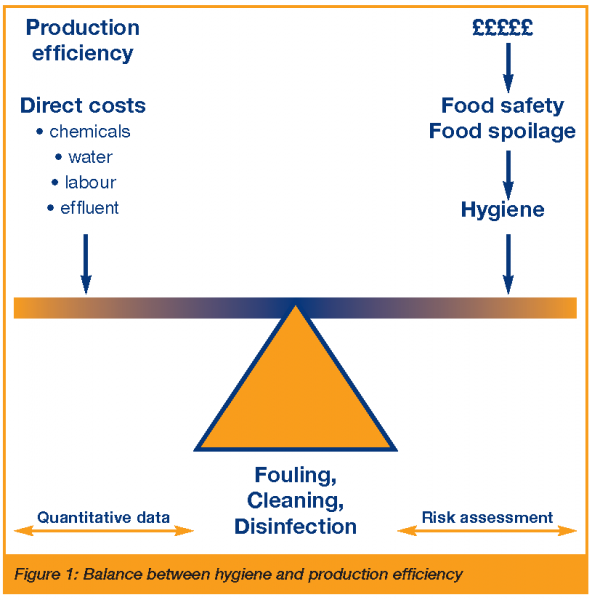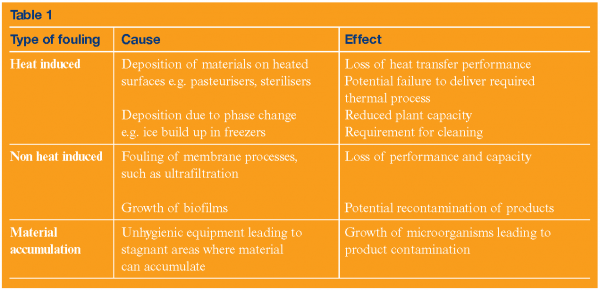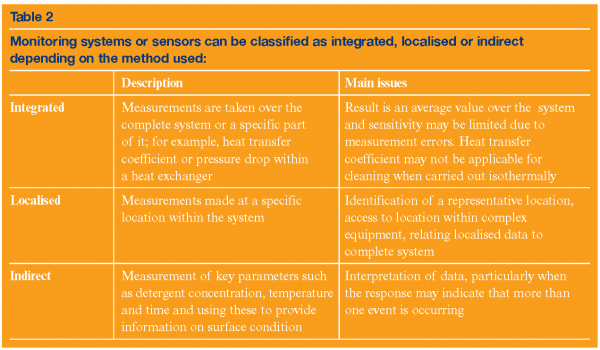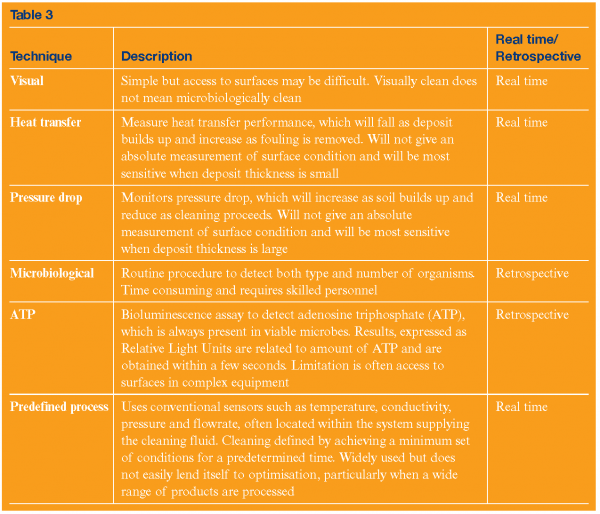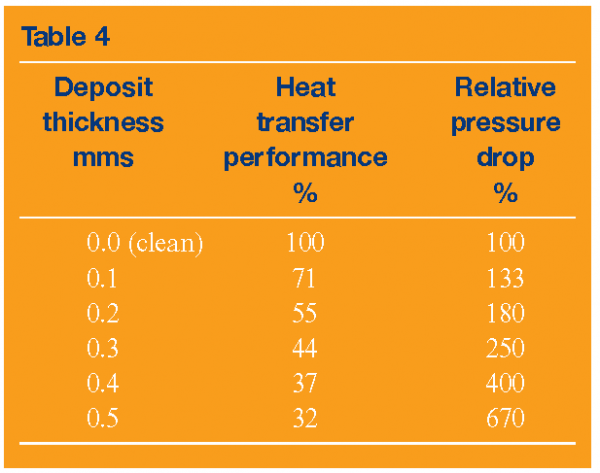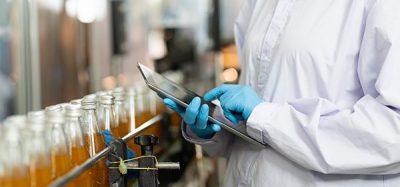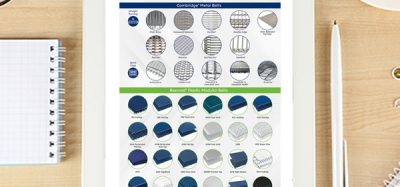Keeping check of factory hygiene
- Like
- Digg
- Del
- Tumblr
- VKontakte
- Buffer
- Love This
- Odnoklassniki
- Meneame
- Blogger
- Amazon
- Yahoo Mail
- Gmail
- AOL
- Newsvine
- HackerNews
- Evernote
- MySpace
- Mail.ru
- Viadeo
- Line
- Comments
- Yummly
- SMS
- Viber
- Telegram
- Subscribe
- Skype
- Facebook Messenger
- Kakao
- LiveJournal
- Yammer
- Edgar
- Fintel
- Mix
- Instapaper
- Copy Link
Posted: 31 January 2005 | Dr. A.P.M. Hasting, Hygienic Processing Project Manager, Unilever Research Colworth | No comments yet
Process hygiene is an ongoing issue of considerable importance for the food industry, as the increasing cost pressures placed on manufacturers by the major retailers have to be met, without compromising the safety and shelf life of the product.
Fouling and cleaning are widely accepted to be the cause of significant practical problems within the food industry in terms of their potential impact on process hygiene and hence product quality, as well as the operational performance of food processing plants. Fouling is the unwanted accumulation or deposition of material on equipment surfaces or stagnant areas of equipment. It is often poorly understood and monitored and consequently difficult to predict when and where it will occur. It is rarely uniform or evenly distributed and may vary significantly even on a day to day basis. Traditionally fouling is strongly, but not exclusively, associated with heat processes. Typical examples and their consequences are shown in Table 1.
Process hygiene is an ongoing issue of considerable importance for the food industry, as the increasing cost pressures placed on manufacturers by the major retailers have to be met, without compromising the safety and shelf life of the product. Fouling and cleaning are widely accepted to be the cause of significant practical problems within the food industry in terms of their potential impact on process hygiene and hence product quality, as well as the operational performance of food processing plants. Fouling is the unwanted accumulation or deposition of material on equipment surfaces or stagnant areas of equipment. It is often poorly understood and monitored and consequently difficult to predict when and where it will occur. It is rarely uniform or evenly distributed and may vary significantly even on a day to day basis. Traditionally fouling is strongly, but not exclusively, associated with heat processes. Typical examples and their consequences are shown in Table 1.
Process hygiene is an ongoing issue of considerable importance for the food industry, as the increasing cost pressures placed on manufacturers by the major retailers have to be met, without compromising the safety and shelf life of the product.
Fouling and cleaning are widely accepted to be the cause of significant practical problems within the food industry in terms of their potential impact on process hygiene and hence product quality, as well as the operational performance of food processing plants. Fouling is the unwanted accumulation or deposition of material on equipment surfaces or stagnant areas of equipment. It is often poorly understood and monitored and consequently difficult to predict when and where it will occur. It is rarely uniform or evenly distributed and may vary significantly even on a day to day basis. Traditionally fouling is strongly, but not exclusively, associated with heat processes. Typical examples and their consequences are shown in Table 1.
Cleaning is the process by which deposits, or accumulated soil in the equipment is removed. The process can vary significantly depending on whether the equipment can be cleaned in place without dismantling, or whether it has to be carried out manually. The process of cleaning may also reduce, but not eliminate, the number of microorganisms within the system. Disinfection can then be applied, as part of the cleaning process, to reduce the number of microorganisms on the product contact surfaces to a level compatible with that required for the product being processed.
Fouling, cleaning and disinfection should be considered as complementary processes, since they can have a significant impact on each other. The type and quantity of fouling will define the challenge for the cleaning process and the optimum strategy for its removal. The efficiency of the cleaning process will strongly influence the disinfection step and, in some cases, failure to clean effectively will compromise disinfection and the safety of subsequent production. Failure to clean effectively may also result in a more rapid build up of fouling in the subsequent production run.
Effective and reliable measurement of such processes is essential for food safety, quality and plant performance as without such information it is not possible to control, monitor or optimise the processes. Monitoring is also an essential element in the validation of processes, to provide the necessary degree of assurance that the method will deliver the intended process on a consistent basis.
Current approaches to monitoring
Monitoring is the intermittent or continuous determination of the amount of specific material or substances present in a system; the condition of a surface or a relevant process parameter such as flowrate, temperature or pressure. Monitoring the build up of fouling is important in order to identify when the plant has reached a condition where cleaning is required. Cleaning processes also require a designated end-point and this may either be defined by protocols based on trials or, ideally, indicated by sensors, which can monitor the progress of the cycle and determine when the required degree of cleanliness has been achieved.
Monitoring systems or sensors can be classified as integrated, localised or indirect depending on the method used (Table 2).
The sensing elements that form the heart of the monitoring system may be classified as invasive if the process equipment has to be modified to allow contact of the sensing element with the process fluid; for example, fitting a pressure gauge into a line. A non-invasive sensor is one that does not require the modification of the equipment for installation of the sensor; for example, the use of ultrasonic sensors on the outside of a pipe, to measure flowrate within the pipe. The sensor may also provide data in real time during the process or retrospectively when samples are analysed off line (Table 3).
Any monitoring and sensing system must meet a number of requirements for it to be of practical benefit to the food industry. The system must:
- Meet a genuine industry need
- Be robust and reliable
- Meet or exceed claimed specification regarding sensitivity and accuracy
- Be simple to install and use
- Be low maintenance
- Be self diagnostic
- Be cost effective
- Be compatible with food industry hygiene requirements
The installation and use of reliable sensors gives the operator the opportunity to move from a situation where process data is limited, retrospective and often of doubtful value, to one where the data is real and immediate. This real data may often be very different from that expected and may lead to concerns as to whether the process is functioning correctly. This, however, provides the impetus for identifying whether there is a fundamental process problem or whether the data does actually represent what would be expected, considering the layout of the line and its current operation.
It is also important for sensor manufacturers to appreciate that in some cases the sensor will not necessarily need to be increasingly sensitive and accurate; robustness and reliability may be more important. When monitoring cleaning flowrate, for example, the target will typically be to achieve a flow equivalent to a mean velocity of approximately 1.5 m/s. For such an application an accuracy of +/- 10 per cent for the flow meter is likely to be quite acceptable, compared with typically quoted figures by suppliers of +/- 1 per cent. The real benefit would be to have a reliable, non invasive unit that could be used in a variety of locations on the plant, to identify areas where flows that are significantly lower than design were occurring.
Enhancing the practical value of sensors
Monitoring of cleaning processes in particular is often limited to delivering a set process in terms of temperature, time and detergent concentration. It is therefore often the case that the first indication of a cleaning problem is at the start of the subsequent production period, by which time it is unlikely to be practical to shut down and clean the line properly. In addition, as process lines must handle an increasingly wide range of products to meet production requirements for flexibility, it is unrealistic to expect a single cleaning process to be optimal in all cases.
The most widely available sensors for monitoring fouling and cleaning in a heat exchanger are temperature and pressure. These can be used to monitor the changes in pressure drop and heat transfer performance across the heat exchanger. As fouling proceeds, the deposit thickness builds up and the pressure drop increases as the cross sectional area for flow is reduced. The deposit acts as an additional resistance to heat transfer and, hence, the heat transfer performance is reduced. Table 4 shows the predicted response of a plate heat exchanger to a build up in deposit thickness, in the case where fouling is assumed to build up at a constant rate.
The cleaning process is essentially the reverse of the fouling profile, with the pressure drop declining and the heat transfer coefficient increasing until the surfaces are clean. It can be seen that the pressure drop is most sensitive at the end of fouling and, hence, the beginning of cleaning, whereas heat transfer is most sensitive during the initial stages of fouling and at the end of cleaning.
Although the above measurements will not provide an absolute measure of surface condition, particularly of cleanliness due to limitations of the accuracy of the individual instruments, the data can be used to monitor various aspects of plant performance, such as:
- Monitoring the consistency of the cleaning and disinfection process delivered to the product contact surfaces
- Provide prediction of maximum time remaining before cleaning is required, based on current rate of fouling
- Optimisation of the cleaning process for different products processed on the same line
- Evaluation of alternative cleaning approaches or detergents
- Identify whether deposits are localised or distributed throughout exchanger
The most appropriate monitoring philosophy would therefore appear to be using multiple sensing elements, rather than expecting a single sensor to provide the complete information required. The components of the multiple sensing system may well display their maximum sensitivities during different phases of the production or cleaning cycles. The combination of sensors may also be able to provide a means of optimising other steps in the overall process, such as rinsing, which are frequently too long, resulting in wasted time and excessive water usage.
In practice, fouling, cleaning and disinfection processes invariably involve a balance between judgements of hygiene and food safety related issues and production efficiencies and direct costs (Figure 1).
The impact of fouling and cleaning on production efficiencies as well as the cost of commodities such as detergents, biocides and services can generally be quantified in cost terms. However, the implications for hygiene are far less easy to quantify and are generally done on the basis of HACCP/risk assessment. In addition, the responsibility for the purchase of commodities, such as chemicals, is generally a central purchasing function, whereas product safety is the responsibility of the QA department.
There is usually an understandable reluctance to reduce the severity of factory cleaning processes due to concern about the impact on hygiene and food safety and the perceived lack of real understanding of the cleaning process. This may be due, in part, to the generally negative view of the cleaning process as one that is necessary but costly.
The monitoring of fouling, cleaning and disinfection is becoming increasingly important in terms of process hygiene, product safety and operating efficiency. Reliable monitoring is essential in order to ensure that the necessary processes are being consistently delivered, without which process validation and optimisation cannot be achieved. Without doubt, opportunities exist for significant improvements to be made to current processes, without necessarily needing new and sophisticated sensing systems, but by making better use of available data.
